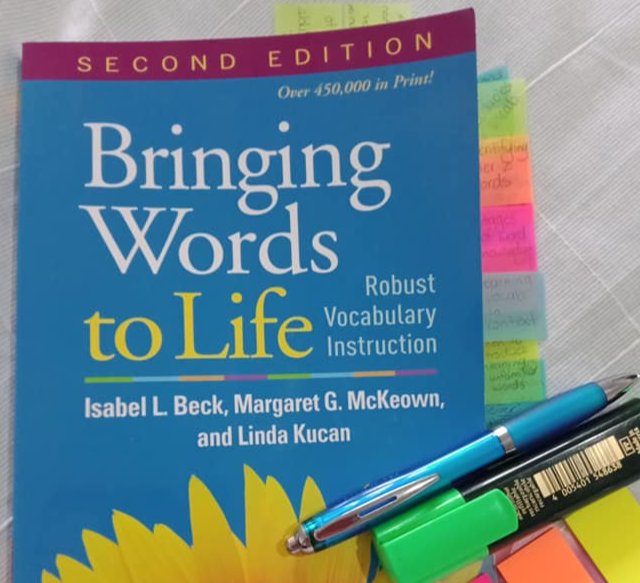Vocabulary Instruction Made Easy

In a previous post about vocabulary, I discussed how we can choose great Tier 2 words and suggested a couple of ways that we might teach them. You can read that post here.
This week, I’d like to unpack a little more from the absolutely fantastic book, ‘Bringing Words to Life’ and share more about how we can make it all happen in our classrooms.

The first thing to know is that there are three phases to vocabulary instruction.
- Introducing the words
- Working with the words
- Keeping the words alive after official instruction ends
Phase 1 - Introducing the word
Vocabulary instruction is about so much more than dictionary definitions or matching pictures. The whole point of vocabulary instruction is to get students to USE the words. Here are the steps outlined to introduce vocabulary words in Bringing Words to Life.
- Read the story or text
- Contextualise the word in the story

- Have the children say the word
Say the word after me: “Investigate” (students repeat the word) Do this several times.
- Provide a child friendly explanation of the word
"Investigate means to have a close look and see what you can find." - Present examples from different contexts

- Engage children in interacting with the words:
Through partner talk

And with questions:
Would you investigate your dinner or would you investigate an ants nest? Why?
(be prepared for different answers here, but asking students to explain their reasoning is a really worthwhile activity for deeper thinking)
- Have the children say the word again
Say the word after me: “Investigate” (students repeat the word) Do this several times.
Phase 2 – Working with the words
“Words are learned incrementally through the creation and strengthening of many connections to the new words” Bringing Words to Life, pg 77
The text has several suggestions of ways to strengthen these connections, but I will just cover two of them here.
Reviewing meaning with questions.
Let’s take our word, ‘investigate’ and presume that we are reinforcing the concept of looking closely, asking questions, taking our time and being thoughtful about things.
You can ask questions such as the following:
- Does investigate mean to look closely or look quickly?
- When would be a good time to investigate? When you are playing in backyard or when you are getting ready for school? (In the backyard, because you need time. There is no time when you are getting ready for school)
- Who might be more likely to investigate? A scientist or a taxi-driver?
If you have introduced several words, you can ask questions for a range of words at the one time.
Finish the sentence.
“I have some sentences that need ending. I’ll start with a sentence and ask you to think of an ending. I’ll show you one for practice. The sentence starts with: I was asked to investigate the ants nest so I …” “Got my magnifying glass and camera so that I could have a close look and take pictures.”
“Your turn! I was asked to investigate ________ so I _______”
You could place several pictures of things to be investigated on the board and allocate them or students could choose according to background knowledge and interest.
Phase 3 – Keeping the words alive after official instruction ends
There are several ways you can revise words and support students to apply them in new situations.
- Have a word wall that you refer to in teachable moments.
- Include a word each day in your morning routine or daily review. Ensure that you are encouraging children to think about the word and use it on their own orally, not just looking at it and listening to you talk about it.
- Keep a tally in the classroom for every time a target word is used in the classroom.
For older students:
- Ask the students to create or find a situation that could be described by a target word outside of school and report back on it in class.

A word on the teaching
If you haven't taught vocabulary in a robust way before, this post will get you started, but I highly encourage you to purchase your own copy of Bringing Words to Life. It is super practical and easy to read.
As I read Bringing Words to Life, it was clear that in order for students to get the best out of the instruction, teachers would have to plan in advance. It is actually quite challenging to come up with a child-friendly explanation on the spot or think of questions that really hit the target. To help you keep things simple, I have created a vocabulary planning template for you to download. Simply pop your details into the box below and it's yours!

 Jocelyn Seamer Education
Jocelyn Seamer Education
4 comments
This would be so useful for using with older children who many teachers find difficult accommodating. This material and teaching strategy would work with a whole class, while also hitting the needs of the child who is struggling with Dyslexic type learning needs.
I would love a copy thanks
Thank you for sharing so generously!
Leave a comment